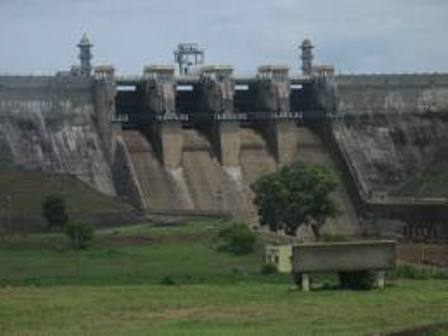Chikkaballapur, Rahul Belagali, Aug 10, 2013: To see in reality the drastic changes brought about on what was carried down by generations of people an option is a visit to the taluk.
Puttamma, an 80-year-old resident of Nandi hobli, tells the tale of the water tanks in Chikkaballapur taluk over the decades.
Virtually in tears, she says, “Water was never a problem for us. Our village was almost an island, as anywhere you saw, you could find water. Now, finding water anywhere is a rarity. All you can see till the horizon are tall buildings or dry field.”
Similar tales
The condition is similar to that of practically any tank in the taluk. There was a time when Chikkaballapur was surrounded by 21 tanks. Kandavara village bordered the taluk.
Moving ahead, we passed by a series of tanks that watered Mushtur, Manchanabale, Jatavara Hosahudya, Dibbur, Peresandra and other villages. Drought was a word unheard of by the residents in Chikkaballapur.
The tanks were also sites of interest to historians, as most of them were constructed towards the end of the 19th century.
The area had dense forest and there was no doubt on whether it would rain.
The British administration, palegars and the local residents had joined hands to construct gigantic tanks in the villages to collect the extra riverwater flowing down from the neighbouring hillocks and even the rainwater.
Changing circumstances
As the years passed, the rainfall decreased and the tanks started drying up. Considering the availability of land a blessing, the local residents started agricultural activities on the dry tank beds.
Next came the setting up of boundaries on the tank beds using stone blocks, insisting ownership of the area.
All this, ironically took place simultaneous to attempts to rejuvenate the dry water tanks- by both the government and the village residents.
A glorious example has been the pride of Chikkaballapur: the Srinivas Sagar tank that lies in between Chikkaballapur and Gauribidanur taluks. The tank was converted into a reservoir by Sir M Visvesvaraya, who found the waters going waste. The water from the ‘never-say-dry’ Srinivas Sagar flowed into the Uttara Pinakini, which, in turn, flowed down to Andhra Pradesh, without coming of much use to the local residents.
There were several canals constructed to even help agricultural work.
All of these, however, are things of the past in more ways than one.
Tank history
Tanks in Chikkaballapur taluk, which spread across 100 acres and more, include Bommammanahalli, Rangadhama, Kandavara Amani, Manchanabale Amani, Gopalakrishna Amani, Jatavara, Hosahudya, Dibbur Hosakere, Katriguppe, Srinivas Sagar, Kanitahalli, Doddamarali Amani, Poornasagara, Chikkapayalagurki, Reddyhalli, Byrasagara, Yadarlahalli, Peresandra Hosakere and Kanasanakunte.
The Rangadhama, Byrasagara and Kandavara tanks were constructed before 1888. Mushtur tank was constructed in 1882, Maavu Amani tank in 1886, Manchanabale Amani tank in 1887, Gopalakrishna Amani tank in 1889, Jatavara tank in 1880, Dibbur Hosakere, Poornasagara and Srinivas Sagar tank in 1890, Reddyhalli tank in 1881.
Yadarlahalli tank is the most recent, constructed in 1977.

